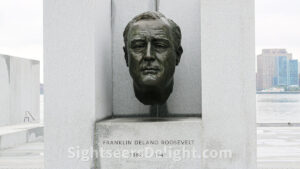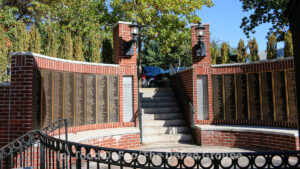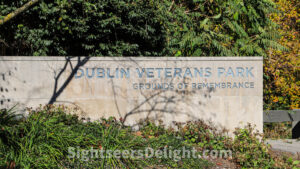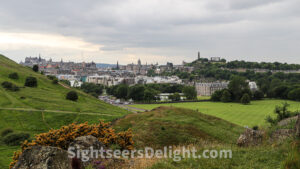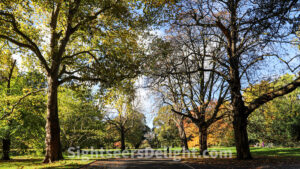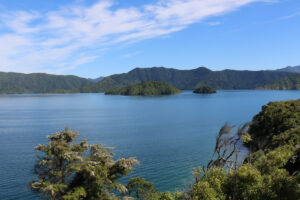The four-acre Franklin D. Roosevelt Four Freedoms Park is located and named in honor of the Four Freedoms President Franklin D. Roosevelt highlighted in his Jan. 6, 1941, State of the Union address. The park is located next to the historic Smallpox Hospital in New York City at the southernmost point of Roosevelt Island. Architect Louis Kahn designed the park. The park was designed in the early 1970s and completed in 2012.
10044
Freedom Plaza, located adjacent to the N.J. Transit Metuchen train station, is dedicated to those who lost their lives on Sept. 11, 2001. Its walls list the names of the more than 700 New Jersey residents, including 13 from Edison and Metuchen, who died in the terrorist attacks.
George Square in Glasgow is an iconic central city square. It has been the backdrop of many historical moments, including a 1940s film set. Today, George Square is known as the principal civic square in Glasgow, named after King George III. It was laid out in 1781 and is home to Glasgow City Council’s headquarters. The square is home to several statues and monuments, including likenesses of famous Scots such as Robert Burns, James Watt, Sir Robert Peel and Sir Walter Scott.
The Grounds of Remembrance in Historic Dublin, Ohio, honors those who served the country in war and peace. The park spans approximately one acre and is adjacent to passive parkland, the Dublin Public Library, the Indian Run Cemetery, and Dublin Road. The Grounds of Remembrance includes the Recognition Walk, which features 500 dedication stones to honor veterans.
The 10-acre Hemenway Park features standard park fare: playground equipment, tennis and basketball courts and gazebos for parties. But, the real attraction here is the Bighorn sheep that descend from the nearby mountains to water, graze and rest. Located in Hemenway Valley on Ville Drive, the park also offers fantastic views of Lake Mead and is the perfect pull off between Las Vegas and the Hoover Dam.
89005
The 445-acre Hermann Park is one of the most visited public areas in all of Houston. The park sits in the middle of Texas Medical Center, Rice University and the Museum District. The park is named for George H. Hermann, who gave the land to the city in 1914.
77030
Hurricane Shoals Park is a public park near Commerce and Maysville, Georgia, that showcases exposed granite shoals along the North Oconee River. The park, spanning over 71.3 acres, officially opened to the public in 1978, but its history dates back to the 1780s. Early settlement began at the site, once a Creek and Cherokee Indian camping ground called Yamtrahoochee. Several buildings were constructed, including a fort, schoolhouse, grist mill, and Baptist church. There is a covered bridge that dates back to 1872, which spans across the North Oconee River. The Hurricane Shoals Park Association Inc. was formed in 1962 to protect the historic area as a recreational facility.
30558
Hyde Park is a historic Grade I-listed urban park in Westminster, Greater London, spanning more than 350 acres. This park and green space stretches from Kensington Palace to St James’s Park and, along with Kensington Gardens, Hyde Park, Hyde Park Corner, Green Park, and Buckingham Palace, forms a chain of greenspace. It is divided by the Serpentine and the Long Water lakes. Henry VIII established the park in 1536, taking the land from Westminster Abbey and using it as a hunting ground. It opened publicly in 1637 and quickly became popular, particularly for May Day parades. In the early 18th century, Queen Caroline directed major improvements to the park. During this time, the park was frequently used for duels, particularly by members of the nobility.
Surrounded by water and with cliffs dropping to the water, Karaka Point was the perfect location for a fortified pa (fort). The location provided the Māori an ideal location to monitor what is today known as Queen Charlotte Sound — first known as Totaranui — for potential invaders. The area was initially named Te Rae o Te Karaka after the Ngati Chief Te Karaka; he settled there during the early 1700s. Today, it offers a stunning vista of Queen Charlotte Sound, formed an estimated 280 million years ago. The park includes historic earthworks, and whare (house) pits that likely date to the early 1700s.

